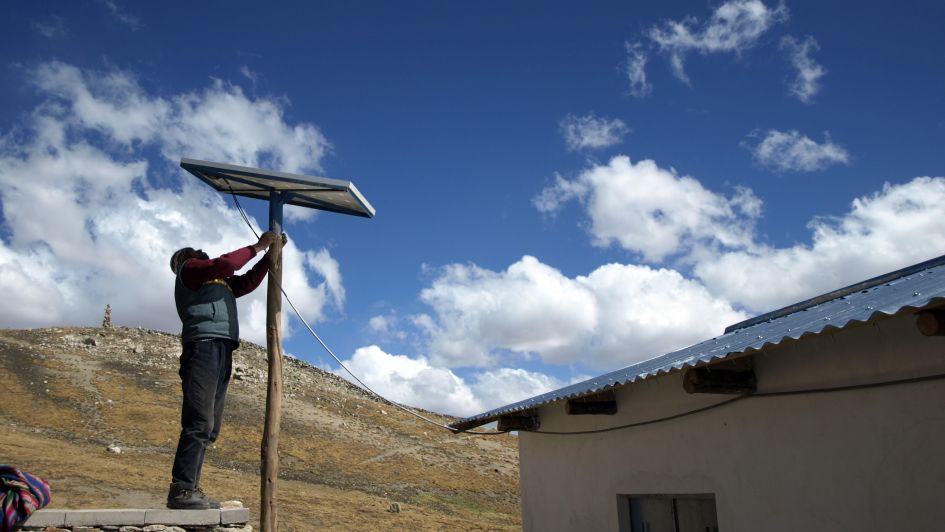2019 is the midpoint of the first decade of the UN Sustainable Development Goals (SDGs). It will be an important year to take stock of our progress on energy access and SDG7, and to forecast into the future about what’s needed to end energy poverty by 2030. By no means comprehensive, here are some of the key trends we expect to see this year:
-
NDCs and SDGs: Several organizations are working to better integrate energy access goals and the role of distributed renewables into achieving Nationally Determined Contributions (NDCs), i.e. voluntary targets under the Paris climate agreement to reduce emissions. If that is successful, climate finance and energy access finance will truly intersect for the first time, potentially freeing up previously unavailable capital for the sector.
-
Nigeria: will be the most-watched energy access market in 2019, especially with mid-year elections looming. Bill Lenihan, co-CEO at Zola Electric, says: “Only 45 percent of the population has energy access. As a result, we are observing a significant demand for distributed energy alternatives that don't rely on the grid.” Investors, including the World Bank, are plowing hundreds of millions of dollars into home solar and mini-grids. Stakes couldn’t be higher. The odds look pretty good, with increased availability of consumer finance, a growing number of companies, more awareness and adoption of solar solutions especially by MSMEs, technology improvement, a solid regulatory framework, and increased power demand. Good luck Nigeria, we need you to succeed.
-
Jobs, productivity, and livelihoods: At a recent conference, a UN agency head told us that “Jobs is the question we get most often”. Specifically, what is the jobs story around renewable energy? With SDG8 -- Decent Work -- being a UN focus this year, 2019 will be a pivotal moment to highlight the key role of distributed renewables in #PoweringJobs, increasing productivity (see a great perspective on this from our partner CLASP) and improving livelhoods. New research, from Power for All, IRENA and others, will emerge to make the case and put the issue front and center.
-
Mini-grids start to scale: 2019 will finally see scale start to happen in mini-grids. We expect global capacity to top 1GW for the first time, with hundreds, perhaps thousands, of new projects across Africa and Asia (micro-hydro still dominates, but solar is catching up). Results-based finance (RBF) will gather momentum, new commercial equity and debt finance (including from local banks) will come into the market, and the private sector will emerge from the trenches. Says James Ellsmoor of Solar Head of State: “From California to the Pacific Islands, microgrids are taking center-stage.”
-
Global uncertainty: With the sudden resignation of Jim Yong Kim from the World Bank, and the current state of geopolitics in the US and UK, private investments funds and other international banks may take the reins on international energy sector and infrastructure development. Look for more opportunities for “collaborative philanthropies” comprised of private funders and high networth individuals to become drivers of international development and energy access. Shine, we need you more than ever.
-
Time for distributed wind?: While more challenging in urban and periurban settings, rural applications could be a strong area of growth for distributed wind, writes Triple Pundit. Smaller turbines can “range up to the megawatt end of the scale.” If costs start to become comparable to other decentralized options, this could be a viable option for rural areas in windy environments. Innovative start-ups like Uprise Energy are gaining attention.
-
Cheaper batteries: The renewable energy oracle, Bloomberg New Energy Finance (BNEF), is bullish on greater storage deployments in 2019 (a critical component for off-grid systems), partly due to faster-than-expected falls in storage costs, but also because of “two emerging applications for the technology – electric vehicle charging, and energy access in remote regions” (italics ours). Costs have limited the implementation of energy storage units with off-grid technology in the past, but 2019 will start to see change.
-
Convergence of power & cooking: As we profiled in our September 2018 newsletter, there are signs that adoption of solar-powered electric induction cooking may be accelerating, bringing together the two tracks of SDG7 -- access to electricity and access to clean cooking. We’re already seeing a number of pilots happening in various countries. After bringing electricity to tens of millions of people already, can distributed solar power also be a significant player in helping address the still lagging efforts to bring clean cooking to 3 billion people? Big hurdles remain, but definitely worth keeping an eye on.
-
Enter the strategics: We identified this as a trend in 2016, and took a deeper look recently in a perspective piece to Axios. There is no doubt that “strategics”, i.e. big international energy companies such as Engie, Shell, Total, Schneider Electric, EDF -- are increasing their stake in the sector, as witnessed by recent acquisitions and ambitious electrification targets. For even more insight on this topic, be sure to listen to our interview with Wood Mackensie analyst Ben Attia in this month’s newsletter.
-
Blockchain: still too early to say, but worth keeping an eye on. It still needs to prove that is has viable and scalable use cases in energy access.
